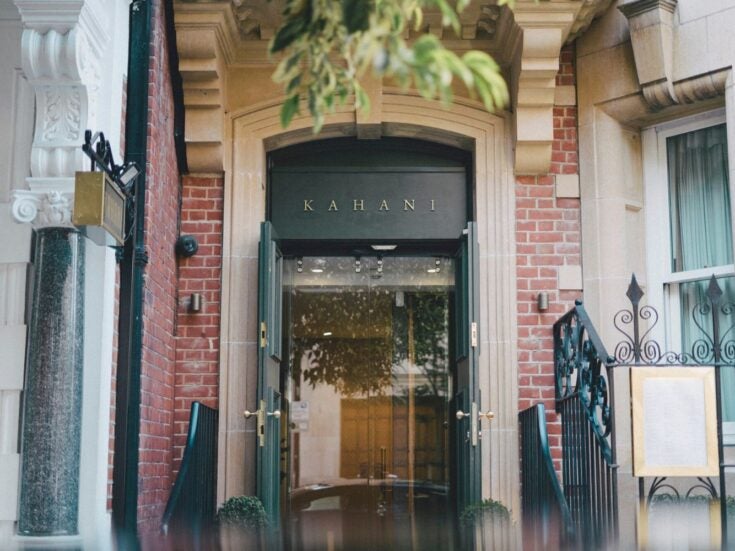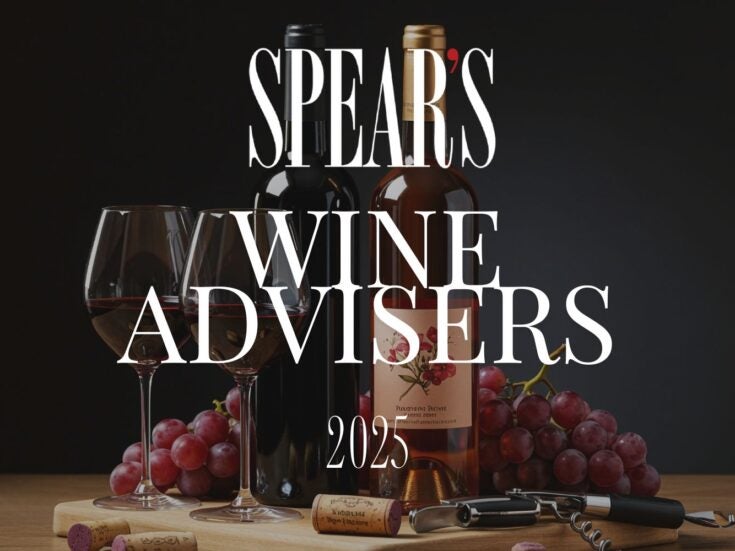
Spring Loaded
Marlon Abela is skin-full of the joys of spring — ah, floral notes with a hint of sunny citrus! — as he samples his favourite Sauvignon Blancs
WITH CHRISTMAS AND the New Year behind us, the champagne tap is running dry. Those heavy meals accompanied by Claret and white Burgundy are merely a faint memory, with just their mark left on our livers.

Spring is looming and an array of wonderful produce and ingredients will start appearing in the marketplace and on restaurant menus. Spring vegetables will be in abundance, the first asparagus and morels will be available and our attention will turn towards seafood rather than heavy game and meat. To accompany this blossoming season, and perhaps to give us a break from the magnificent but heavier white Burgundies, I like to turn my attention to Sauvignon Blanc.
I’ve always believed that when it’s ‘worked’ properly, this grape varietal creates some of the most complex and enjoyable wines that offer a fruitiness that is hard to find in Burgundy and one which is so representative of the Loire Valley — a great companion to the forthcoming season’s treasures. To me, what puts a wine estate in a league above its peers is consistency, year in and year out producing remarkable wine, while always respecting the terroir and the inherent integrity of the grape varietal.
Unfortunately, many producers in Sancerre and Pouilly-Fumé have ruined the reputation of the Loire Valley by overproducing diluted, reduced, green and somewhat acidic wines, historically commercialising the type of bottle one would over-chill and open at a casual lunch on a terrace with a bunch of pals, where the wine is either ignored or used to get inebriated. However, three estates stand out in my mind: Didier Dagueneau in Pouilly-Fumé, Alphonse Mellot and Vacheron in Sancerre. It should be noted that typically these wines do not undergo malolactic fermentation and hence they maintain their aromatic and fresh style.

Domaine Didier Dagueneau
Pouilly-Fumé
Didier Dagueneau’s wine making style revolutionised the region, producing the most complex and terroir-oriented wines Pouilly-Fumé has ever seen, always finding a near perfect balance between aromatics, opulence, structure and acidity, creating t?te de cuvée wines that drink well over at least a decade. He was larger than life — eccentric, opinionated — but sadly he was killed in 2008 in a freak plane accident. Luckily his son Benjamin is carrying the family torch in a spectacular manner.
I recently tasted Dagueneau’s 2007 Pouilly-Fumé Cuvée Silex. 2007 is a reasonably good year but doesn’t compare to ’08 or ’09. Despite this vineyard being hit by a hail storm, he was still able to work his magic. It has a lemon rind colour, with great vibrancy, and a very explosive and expressive nose with layers of gooseberry, physalis, grapefruit, marshmallow, daisies and a hint of pineapple in the background.
A full mouth is accompanied by a fresh tension and youthfulness. Great length and purity. Again the palate reflects the nose, with tastes of gooseberry and white flowers. It enjoys great vivacity — the vines grow on flint stone, giving it an intense minerality, hence its name Silex. It will benefit from further maturing, though it’s perhaps not quite as ample as the great 2005 (which a little while ago I scored 18.5). Although it’s like comparing apples and pears, I wonder how many white Burgundy Premier Crus could challenge it.
17.5/20
Domaine Alphonse
Mellot Sancerre
Across the river in Sancerre, Alphonse Mellot makes wine that is a cut above the rest. His Sauvignon Blancs are forward, bold and have real texture to them, but still maintain the underlying signatures of the grape varietal: vivacity and acidity.
The top cuvée is the Génération XIX and he produces both Sauvignon Blanc and Pinot Noir Sancerres. (The 2005 Pinot Noir Génération XIX wowed me and compares to some of the best of Burgundy). Génération XIX is unique due to its 87-year-old vines, hence its tiny production, spread over a mere six hectares. (The family claim that they’ve been producing wine for nineteen generations, which explains its name.)
His more prolific Sancerre La Moussière is also a great spring lunchtime drinker and offers remarkable value for money.
Recently in New York I uncorked a 2009 Sancerre Génération XIX. With a rich, golden colour, ripe peach, acacia, confit lemon nose, it’s also very layered, a palate filled with lime, pineapple, even a touch of caramel. Very long, lifted by a good acidity but already precocious due to the very ripe nature of the 2009 vintage. It should drink very well over the next four to five years. Such an underrated wine.
18/20

Domaine Vacheron
Sancerre
This is another excellent family-owned Domaine, from an estate that is proud of its biodynamic viticulture and is the most affordable of the three I’ve mentioned.
The t?te de cuvée Sancerre les Romains 2008, is more austere than the above, partly due to the style of the vintage. Light lemon peel in colour, it has a very mineral nose with aromas of grapefruit, fresh almond and gooseberry. It’s still young and relatively closed, but its backbone and structure are at the beginning of its development and the wine should drink well over the next seven to eight years. A somewhat mean…
16.5/20
WHAT ALWAYS FASCINATES me is the endless choice of such diverse wine regions, grape varieties, styles and price points. It’s easy to get comfortable and complacent. Wine to me is all about discovery. There are some wonderful Sauvignon Blancs in the Loire Valley, and we haven’t even talked about New Zealand, California, or indeed the Bordeaux region (often blended with the Sémillon grape).
When it comes to white, I also have a great love and penchant for Riesling, which produces wines of such different styles, the ones from Austria, Germany and Alsace being my favourite.
In my mind, one of the greatest white wines in the world is the Riesling Clos Ste Hune, from Domaine Trimbach in Alsace. I still have 1971’s, 1983’s and 1990’s in my cellar and they all remain remarkable; I rate them all as 18-plus wines. The first time I tasted this wine, many years ago, made me realise how little I knew and how the world of wine is a constant and magical journey of discovery.
I encourage everyone to make wine a fun and intriguing personal journey — who knows where it may end up taking you?
Tasting Notes
(postscript to issue 24)
Ch?teau Latour 2001
Further thoughts on the Latour 2001, covered in the last issue: On this occasion, this particular bottle wasn’t showing as well as it has done in the past. It lacked some length and was not as full or as complex as expected. It did, however, have lovely aromas of smoky oak, dried herbs, a hint of eucalyptus, graphite and redcurrant. At previous tastings when it was compared side by side with the magnificent 2000, opinion was split between which was the better of the two wines.
Marlon Abela is the founder of MARC Ltd, whose portfolio includes MARC Fine Wines, Morton’s, Umu and the Greenhouse






